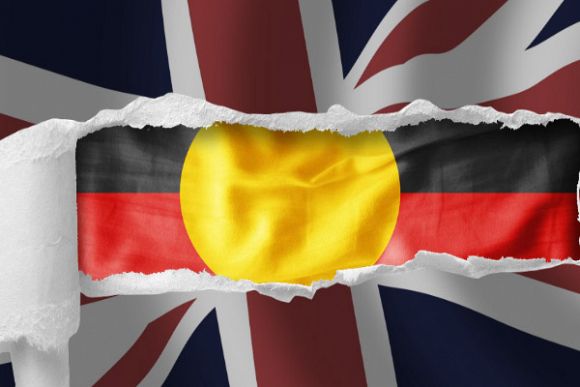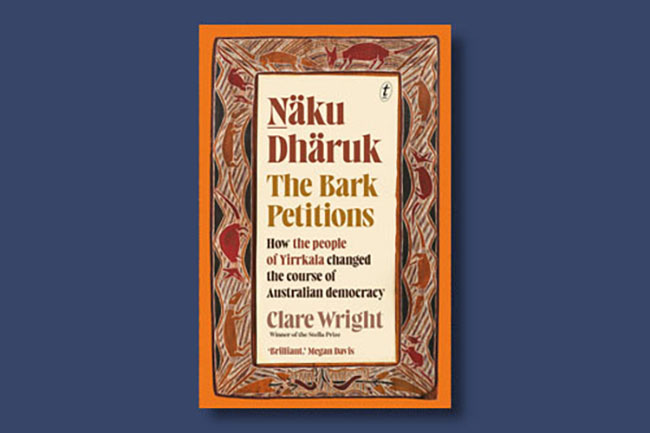Jim Kable reviews a new book that examines a killing and hidden history that goes to the heart of this nation.
SOME 20-PLUS years ago, flying high across Central Australia en route to Japan, I glanced out my left-side aeroplane window and there down below was the same image of Uluru as seen on the cover of recently published Return to Uluru by Sydney University's Professor of History, Mark McKenna.
This is the second volume of a trilogy planned by McKenna (the first, From the Edge: Australia's Lost Histories) and the next to deal with the history of places where the author has lived.
While teaching in Japan some 30-plus years ago, I did my best to dispel two insistent hopes from my Asian students and friends there: that they might hug a koala (being held was too stressful for the creatures) and that they would climb “Ayers Rock" (explaining that the Anangu traditional owners were requesting that visitors not climb Uluru but, rather, take guided tours around the base for an insight into its Indigenous spirituality).
I introduced my middle school students to Indigenous Australian singer and songwriter Archie Roach’s 'Took the Children Away' and to Broome's pearl-shell diving Japanese history with Australian musician Ted Egan’s song 'Sayonara, Nakamura'.
Recently, I’ve been back in touch with Ted who lives in Alice Springs and I have followed up on some of our discussions by reading his masters' thesis MAKARRTA [sic]: The Caledon Bay and Woodah Island Killings 1932-33 — published in 2017 as Justice All Their Own: The Caledon Bay and Woodah Island Killings 1932-1933. It details the 1932 Caledon Bay “massacre” of five Japanese trepang fishers and the subsequent murder on Woodah Island of policeman Albert McColl, sent to bring in those responsible for the killing of the trepangers — nearly a year later.
McColl was a police mate of William McKinnon (Bill McKinnon) in their early appointments to the administration of Central Australia on the eve of its collapse into the Northern Territory and Stuart (soon to be Alice Springs). McKinnon’s story is, in certain respects, at the centre of McKenna’s book.
Though set in the rather lush and photogenic landscape of Kakadu and north-eastern Arnhem Land, the recent Australian-made film High Ground tells the nuanced story of the violence of the police against Indigenous peoples of that and earlier eras; of missions and official reports and a frontier land where languages and motives do not meet. Now, take that story and set it in the western desert region of the south-western Northern Territory and you have the basis for Return To Uluru.
There are four parts to the drama explored by McKenna. The introduction, 'Looking for the Centre', tells the history of invader exploration – Charles Sturt, Ernest Giles and John McDouall Stuart – from the building of the Australian Overland Telegraph Line to expeditions by Australian geologist Cecil Madigan and McKenna’s own journeys from 2013 into the heart of the nation.
In 'Lawman' we are introduced to Bill McKinnon — arriving by train from Adelaide to Stuart in Central Australia in early June of 1931. This is not quite three years after the infamous Coniston Massacre of August to October 1928 in which upwards of 200 Warlpiri people were killed.
Names of police implicated in massacres in the Northern Territory go back to South Australian jurisdiction days (up until 1911) and the Premier of South Australia Sir John Downer-protected constable, William Willshire. We learn of William George Murray of Coniston infamy, who remained a policeman in the Northern Territory until his retirement in the 1940s — he was intimately known to McKinnon. 'Lawman' tells the story of the murder (killing) by McKinnon of Aboriginal man Yokununna at Uluru and subsequent matters.
Part Three – 'Uluru' – is the heart of the book — referring not only to the place but also to the name of Paddy Uluru, a traditional owner of Uluru and one of the men arrested by McKinnon during his investigation of the death of Aboriginal man Kai-Umen (for infringement of Pitjantjatjara tribal law). It details the board of enquiry set up in 1935 to investigate the case of McKinnon and Yokununna and introduces two important people in the context of the Northern Territory — anthropologists Charles P. Mountford and Ted Strehlow.
Part Four – 'Desert Oak No. 1' – brings it all together in a reconciliatory manner: the uncovering of the McKinnon records of the case; the discovery of the remains of Yokununna (now in South Australia Museum) and the participation of the descendants of Bill McKinnon, Paddy Uluru and of Yokununna himself — along with the hand-back of Uluru and Kata Tjuta to the traditional Anangu owners, and the ending of the disrespectful climbing of "the rock".
It details the ethics of writing history. In a truly lyrical way, McKenna engages with the dilemma confronting all people who want to be both respectful to memory yet truthful to the record of the past. He does it magnificently, his acknowledgements making his feelings absolutely clear.
And of course, the entire book is a reference and footnote to 2017's 'Uluru Statement from the Heart' — Voice. Treaty. Truth.
Jim Kable is a retired teacher who taught for many years in rural and metropolitan NSW, in Europe and later, long-term in Japan. He is also a member of the steering committee of political party The New Liberals.











